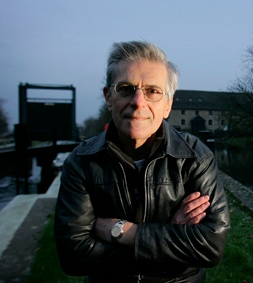Comment Innovation
Speeding up the adoption of enabling and renewable technologies
IKE fellow Professor Colin Coulson-Thomas discusses the challenges that are holding back successful innovation, and how we can speed up the adoption and implementation of innovative ideas in corporate operations.
The speed with which some successive innovations are embraced by consumers has increased exponentially. Millions of people may now adopt an innovation before less connected people become aware of it. So why is speeding up the adoption of new technologies an issue?
While consumers with sufficient money may try something new that appeals, many organisations - especially larger ones – and governments move more slowly.
Various factors can hinder progress. Available budgets may be committed. Lengthy consultation and procurement processes may be involved. Vested interests may fight to protect existing activities. There may be dependencies. A complementary infrastructure may first need to be put in place, such as charging points for electric vehicles. Contracts may need to be renegotiated or terminated. Approvals, regulations or legislation may be required.
An innovation may create the potential for various benefits, but their realisation can depend upon factors such as understanding, demand, price and the availability of alternatives. Many approaches to selling, selecting and adopting innovations and new technologies are not helping. We need to speed up their selection and adoption.
Applying critical success factors
We don’t need to transform every area of corporate operations. We need to focus on critical success factors for certain tasks relating to understanding, selling, selecting and adopting new technologies and understand what top-quartile superstars do differently in these areas.
Average performers can often be quickly helped to adopt the winning ways of high achievers. Returns on investment can be quicker and higher than those from more general approaches.
For 30 years I have led an investigation to identify critical success factors for activities such as winning new business, competitive bidding, building key account and other customer relationships, purchasing, pricing, corporate learning and creating and exploiting know-how.
“
We have found that even the best companies are only very effective at less than half of the identified critical success factors."
Over 2,000 companies, over 500 professional firms and various public bodies have been surveyed. Over 20 reports now cover various industrial sectors and supporting professions. Other evidence-based reports are concerned with change, knowledge and talent management and quicker, more affordable and less disruptive routes to high performance organisations.
We have found that even the best companies are only very effective at less than half of the identified critical success factors. The performance of every company participating in every survey could have been quickly increased by putting additional critical success factors in place. Performance can increase with each additional one that is adopted.
The difference between winners and losers
The investigation yields lessons for speeding up the adoption of enabling and renewable technologies. The difference between top-quartile winners and bottom-quartile losers is stark and many critical success factors concern understanding.
Top-quartile bidders were six times as likely to understand ‘cost of ownership’ impacts on buying decisions. They were four times more likely to understand the business environment within which customers operate, the value and benefits they were seeking and the factors they consider when buying.
While losers focused on selling, winners were much more likely to focus on helping people to understand, select and buy what was most relevant for them. Not one of the bottom-quartile losers in the investigation on building key and strategic customer relationships appeared to be effective at any of the factors for locking in a customer.
The pricing laggards were reactive, cut costs, standardised and used discounts to buy business. They were much more likely to end up as commodity suppliers. The pricing leaders proactively differentiated, tailored, offered additional services, delivered more value and hence were more likely to become sought after business partners.
“
In surveys, both buyers and sellers wanted more collaborative relationships with trusted partners to achieve better solutions."
There are many ways of differentiating that do not involve competing on price, including the forms of relationships that are offered. We find buyers who spend much of their budgets on procurement and sellers who spend heavily on sales and marketing. Both often engage in win-lose haggling.
In surveys, both buyers and sellers wanted more collaborative relationships with trusted partners to achieve better solutions and share the costs previously devoted to buying and selling that could be saved. The superstars in the top quartile of achievement were usually few in number. For example, only 4% of participants in the study of competitive bidding won more than three quarters of the bids they entered.
The key to coping with variable performance and increasing productivity is to identify superstars in key workgroups and capture and share what they do differently. Helping people to understand and excel at difficult tasks can lead to the more rapid adoption of innovations and new technologies. There are many affordable ways of doing this and making it much easier for people to do difficult jobs such as selling and acquiring them.
Simple support tools developed by a team I co-founded and chaired won awards for innovation, including internationally, coinciding with a meeting of OECD Ministers concerned with innovation and enterprise.
Such support can be individualised and made available 24/7 when and wherever it is needed, including while on the move. It can be simple, scalable, cost- effective and simultaneously deliver benefits for people, organisations and also the planet when people are made aware of the implications of different options.
Innovation is only the beginning
Many large organisations and public bodies can be agonisingly slow to adopt innovations that cannot be easily acquired by individual consumers but are obviously beneficial. In the 1980s I experienced working AI environments at Xerox PARC and discussed applications that have still not been adopted.
Renewable energy technologies are becoming more affordable and offer hope in tackling one of the greatest challenges that has ever faced life on this earth. They will not be adopted just because they exist and can reduce carbon emissions.
Producing innovations is only the first step. We need to help people to understand, select and acquire them. We need to be creative in offering ways in which people can finance acquisition and implementation.
You may need help in packaging solutions. Partner with others who understand the contexts in which solutions may be sought. Technological innovation needs to be accompanied by complementary innovations and especially innovation in buyer-seller relationships. There are affordable ways of helping people to understand and adopt innovations and new technologies that can be adopted irrespective of existing people and corporate structures and cultures.
This article is based upon a plenary speech recently delivered in New Delhi by Professor Colin Coulson-Thomas at the 10th World Renewable Energy Technology Congress, at which he also delivered keynote and valedictory addresses and received the Energy and Environment Foundation’s 2019 Global Excellence Award in Renewable Energy at the combined inauguration of the congress and the 3rd World Water Summit.

